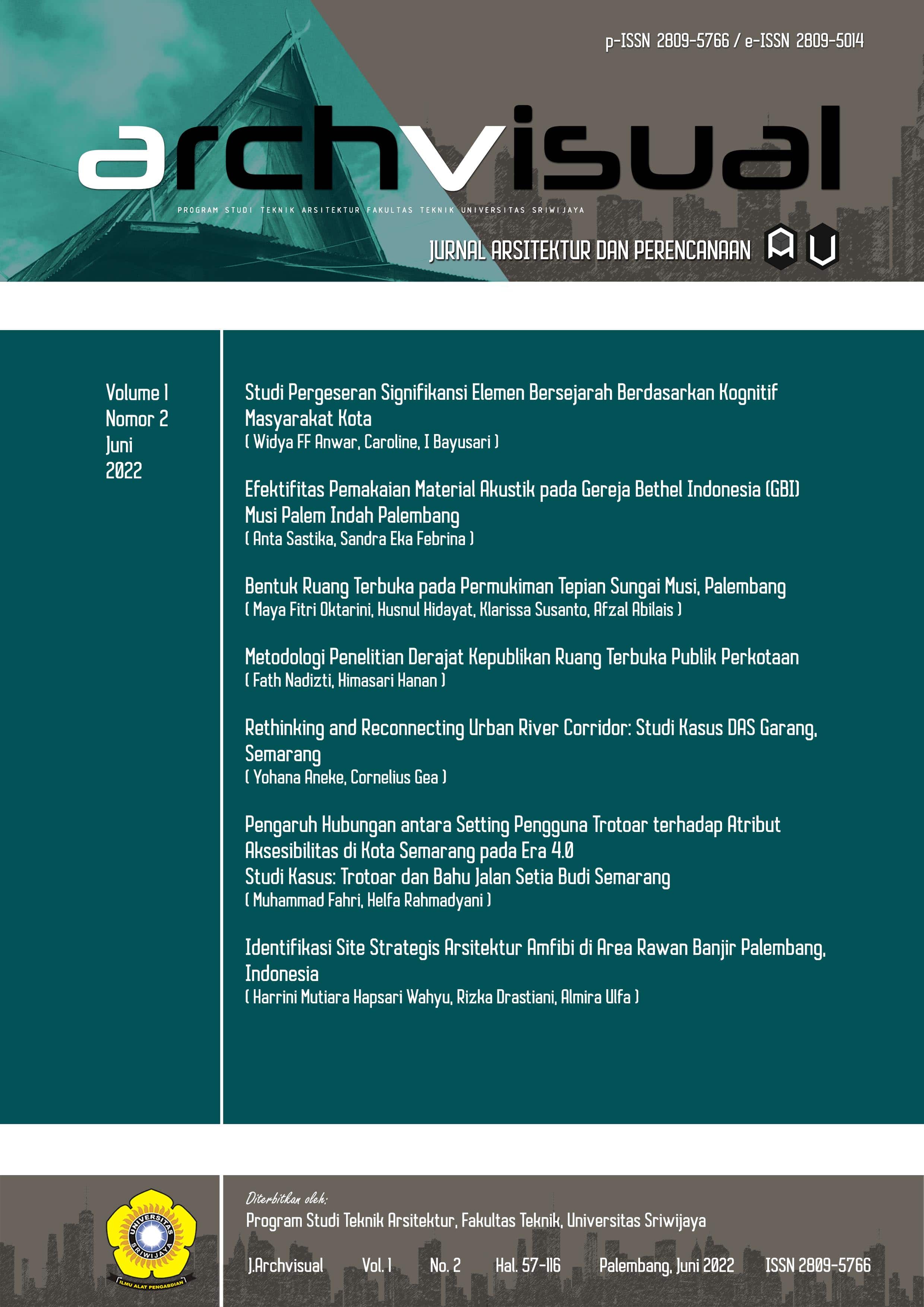Bentuk Ruang Terbuka pada Permukiman Tepian Sungai Musi, Palembang
Main Article Content
Abstract
Public open space is an important residential facility to create a healthy living space for city residents. Facilities that perform a major role in accommodating the activities of community life in urban settlements. In riverside settlements, riverbank areas have a large land potential for building public open spaces. The riverside open space is an important element in making the characteristics of a riverside city. This study aims to identifies the form, distribution, and size of open space in settlements along the Musi riverbank of Palembang. This study also observes the function of open space in accomodating residents’ activities. The research uses rationalistic methods, through field observations in the form of observations of physical settings and functional aspects. The results show that the open space for public interaction and activities is evenly distributed in various sizes and locations, but is not supported by supporting facilities. Meanwhile, the community creates alternative open spaces to accommodate their various activities for the solution of lacking public space. Without an opening of new land, revitalization of the settlement infrastructure should be focus on improve the informal open spaces by providing a sitting area with benches, lighting, shade, trees, and stall area could increase comfortability, safety, and leisurity of the public open space.
Article Details
Section

This work is licensed under a Creative Commons Attribution-NonCommercial 4.0 International License.
How to Cite
References
Andersson, Cecilia. (2016). “Public Space and the New Urban Agenda.” The Journal of Public Space 1(1): 5–10.
Darmawan, Edy. (2007). "Peranan Ruang Publik Dalam Perancanagan Kota (Urban Design)". Badan Penerbit Universitas Diponegoro, Semarang.
Fitri, Maya. (2014). “Kriteria Pengembangan Pembangunan Di Lahan Basah Riparian Dengan Pendekatan Ekosistem.”
Kamalipour, Hesam, & Kim Dovey. (2020). “Incremental Production of Urban Space: A Typology of Informal Design.” Habitat International 98: 102133.
Koohsari, Mohammad Javad et al. (2015). “Public Open Space, Physical Activity, Urban Design and Public Health: Concepts, Methods and Research Agenda.” Health & place 33: 75–82.
Lussetyowati, Tutur. & Johannes Adiyanto. (2020). “A Study on Urban Spatial Patterns of Riverside Settlement: A Case Study of Musi Riverside, Palembang.” IOP Conference Series: Earth and Environmental Science 402(1): 012010.
Mehta, Vikas. (2014). “Evaluating Public Space.” Journal of Urban design 19(1): 53–88.
Michiani, Meidwinna Vania, & Junichiro Asano. (2019). “Physical Upgrading Plan for Slum Riverside Settlement in Traditional Area: A Case Study in Kuin Utara, Banjarmasin, Indonesia.” Frontiers of Architectural Research 8(3): 378–95.
Permana, Asep Yudi, Sugiono Soetomo, Gagoek Hardiman, & Imam Buchori. (2013). “Smart Architecture as a Concept of Sustainable Development in the Improvement of the Slum Settlementarea in Bandung.” : 11.
UN Habitat. (2009). Planning Sustainable Cities. Earthscan.

